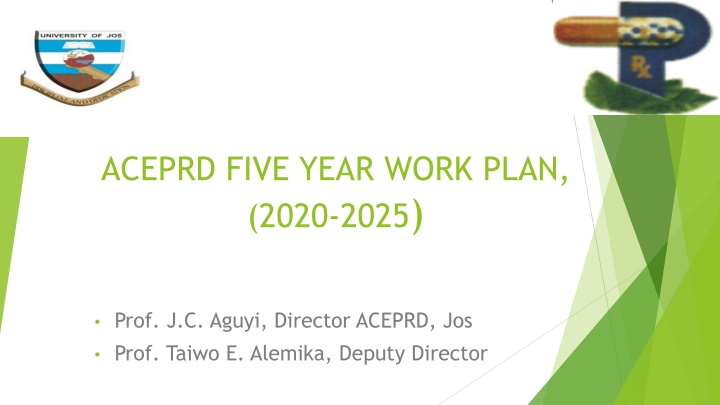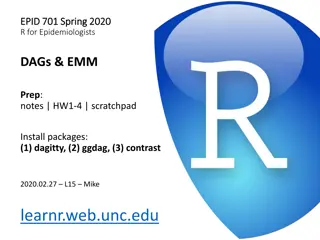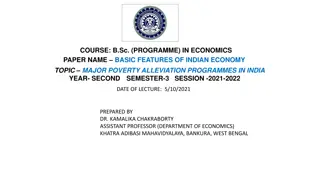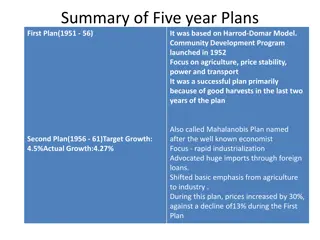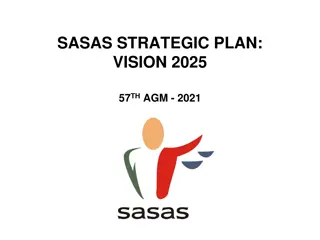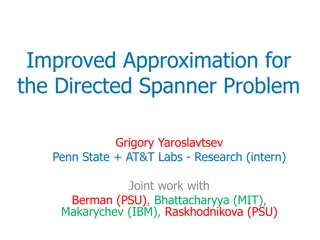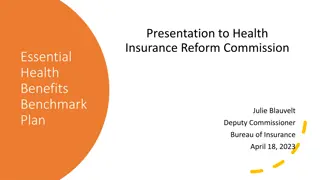ACEPRD Five-Year Work Plan (2020-2025) Directed by Prof. J.C. Aguyi & Prof. Taiwo E. Alemika
This document outlines the ACEPRD Five-Year Work Plan spanning 2020-2025 under the direction of Prof. J.C. Aguyi and Prof. Taiwo E. Alemika. It provides a roadmap for the organization's strategic initiatives, goals, and projects over the specified period. The plan aims to guide the staff, stakeholders, and partners in achieving sustainable development and excellence in their endeavors. Through collaborative efforts and innovative strategies, the ACEPRD is committed to making a positive impact and driving positive change within its sphere of influence.
Uploaded on Feb 20, 2025 | 7 Views
Download Presentation

Please find below an Image/Link to download the presentation.
The content on the website is provided AS IS for your information and personal use only. It may not be sold, licensed, or shared on other websites without obtaining consent from the author.If you encounter any issues during the download, it is possible that the publisher has removed the file from their server.
You are allowed to download the files provided on this website for personal or commercial use, subject to the condition that they are used lawfully. All files are the property of their respective owners.
The content on the website is provided AS IS for your information and personal use only. It may not be sold, licensed, or shared on other websites without obtaining consent from the author.
E N D
Presentation Transcript
ACEPRD FIVE YEAR WORK PLAN, (2020-2025) Prof. J.C. Aguyi, Director ACEPRD, Jos Prof. Taiwo E. Alemika, Deputy Director
Research workflow for the next five years Biomarker Isolation Analytical Methods Plant selection Extraction Bioassays Metabolomics Toxicity Studies Biopharmaceautics
Research workflow for the next five years Bioactive Plant Research Several indigenous species have been prioritised for the next five years Species have been selected based on their traditional uses and commercialisation Natural populations and cultivated materials will be sampled The endemic nature of the selected species provides a competitive geographical advantage for this research to be undertaken
Research workflow for the next five years Extraction This step dictates the outcomes of the profiling and bioactivity This will optimise in terms of efficiency, yield, bioactivity and chemical composition by using automated speed extractors These extracts will be subjected to chemical fingerprinting techniques, bioactivity testing and chemometric modelling
Research workflow for the next five years Biomarker Isolation: Chemical standards are not commercially available for many selected plants Phytoconstituents needs to be isolated using in-house preparative methods such as Column chromatography High speed countercurrent chromatography GC-MS Capillary Electrophoresis Standardisation of these phytochemicals shall be made commercially available Chemical identities and structure will be confirmed using started spectroscopic methods through existing collaboration
Research workflow for the next five years Analytical Lab services Quality of phytomedicine hinges on three crucial aspects: quality, safety and efficacy Development quality control standards for several botanical raw materials and phytomedicine forms a fundamental component of proposed research Latest technology shall be used Semi-automated high performance thin layer chromatography(HPTLC) Vibrational spectroscopy GC-MS Ultra performance liquid chromatography coupled to mass spectrometry(UPLC-MS)
Research workflow for the next five years Toxicity studies One of the biggest misconceptions that herbal is safe There is urgent need to document potential deleterious effects of herbal medicine a largely neglected priority in local herbal medicine research Use of Drosophilia have been extensively used for toxicity studies
Research workflow for the next five years Biopharmaceutics After oral intake of phytomedicine products, it should reach the site of action to be effective Research on biopharmaceutical aspects towards developing effective commercialization of these products are lacking Use of pre-clinical and clinical studies are needed to establish this In vitro methods will be used to investigate the pharmacokinetics and herb-drug interactions of compounds.
Human Capital Development Its envisaged that 100 Postgraduate students its expected for graduation in the next five years Post doctoral fellows
Research outputs Publications 35 Commercial production Scabi-plus Soap, Scabi-Plus cream, Scabi-plus Shampoo Anti-snake vaccine Covip
Ongoing Research activities Research Antimicrobial and biofilm resistance Galleria Mellonella Model for drug research Courses Maintaining of former courses at MSc and Ph.D. level Short courses: Protein purification, vaccinology, mushroom cultivation, business plan preparation Internship- Gauze, POCO, NIPRD,NAFDAC,Hospitals
BUDGET Activity Equipment Fellowship- postdoctor al Overhead Consumabl es Support and research assistants Scholarship s Seed grants 65,000 Year 1 200,000 50,000 Year 2 200,000 50,000 Year 3 200,000 50,000 Year 4 200,000 50,000 Year 5 200,000 50,000 Total 1,000,000 250,000 30,000 105,000 30,000 105,000 30,000 105,000 30,000 105,000 30,000 105,000 150,000 525,000 50,000 50,000 50,000 50,000 50,000 250,000 500,0000 500,0000 500,0000 500,0000 500,0000 2,500,000 65,000 65,000 65,000 65,000 325,000 5,000,000 TOTAL
Sources of funds University Research grants Laboratory services water, Drosophila, bioassays, consultancy Phyto products Scabi plus, mushroom farm
Conclusion ACEPRD has brought international opportunities to the University of Jos The outcome include generating new knowledge, bringing indigenous knowledge to the fore of national health delivery Its been of benefit to the society as a whole
